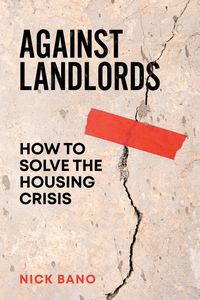Book reviews – Kotz, Thevoz, Bano
 Discredited reformism
Discredited reformism
Socialism for Today. By David M. Kotz. Polity, 2025. xii +192pp.
This is an intriguing book. With the subtitle Escaping the Cruelties of Capitalism and chapters on such topics as ‘Reform of Capitalism’, ‘Lessons from the Past for a Socialist Future’ and ‘From Capitalism to Socialism’, we are promised an enticing read. And perhaps all the more so that its author, though a seasoned academic, tells us it is aimed at a general audience and so tries to avoid technical analysis.
It is hard not to identify with his description of the capitalist society we live in, clear and straightforward as it is. His introduction sums up briefly but highly effectively some of the key ills associated with capitalism (eg, inequality, insecurity, poverty, homelessness, racial prejudice, war), while highlighting the paradox that, while capitalism has brought ‘economic and social advances’, it is at the same time ‘the underlying source of the severe problems encountered by the majority’. His three ‘defining features’ of capitalism – a market economy, wage and salary work and pursuit of profit – also neatly sum up the system we live under. He goes on then to aptly encapsulate the way it works as ‘an economic system in which the wealthy owners of enterprises hire free wage workers to produce products and compete to sell them in the market, with the aim of gaining the maximum possible profit’. And in this system, ‘the labor of the working class is the direct source of the flow of wealth that accrues to the capitalist class and that relationship of exploitation gives rise to a class struggle pitting labor against capital’.
However, while presenting a clear analysis of what capitalism is and how it works overall, David Kotz is not an absolutist, in the sense that he recognises that the particular forms it takes in certain countries and under certain political regimes may make life more or less comfortable or uncomfortable for workers. So, for example, he sees the kind of ‘social democratic’ capitalism practised in various Scandinavian countries as less oppressive than places where dog-eat-dog ‘neo-liberalism’ holds sway and certainly than countries where highly authoritarian regimes rule over the system, such as Russia and China. This does not however prevent him from advocating in all these places a complete change of system which he calls socialism.
What does he mean by socialism? He describes it as a society of ‘democratic participatory planning’ with ‘an economy designed to meet the needs and wants of the population’. He stresses the need for active participation by that population in decision-making while not attempting to lay down a blueprint of how that may work, since – and this seems eminently sensible – at any point of the development of any social system there will be a variety of views on how thing should operate according to the nature of that development and the availability of means available, and so it is likely there will be ‘a decision-making process based on negotiation and compromise’. The difference from what happens now, he makes clear, is that planning and decisions about how we organise our lives will not depend on profit-making or vested interests.
So far so good, but as this book progresses, some significant differences do emerge between certain key aspects of the author’s view of socialism and that of the Socialist Standard. The Socialist Party has, since its foundation in 1904, defined socialism as a marketless, moneyless, stateless, world-wide society of common ownership, economic equality and free access to all goods and services based on the principle of from each according to ability to each according to need. But Kotz isn’t really with us on a good deal of this. For him socialism continues to have money and separate states and some people get more (if not much more) of that money than others depending on the work they do. And there would be ‘public banks’. So given that goods are still bought and sold with money, that is not a free access society. And given that states still exist, there are still governments and leaders, even if democratically elected or appointed. ‘Public ownership and economic planning, along with a democratic state’ is how he describes it.
He does not seem to have considered the possibility of a moneyless, free access society, which has remained alive as a strand of socialist thought since the nineteenth century and could be easily translated into practice given the potential abundance and production and distribution techniques offered by modern technology. He does present an argument for not advocating a single worldwide society, which is that it could not possibly all happen across the world at the same time and therefore each country will have to take its own path to it when it is ready – and indeed in the meantime there would likely be a situation where both socialist and capitalist countries exist side by side from one country to another (‘a mixture of capitalist and socialist systems’, as he puts it).
He does concede that ultimately there could be world socialism but even then he envisages it as ‘a world of socialist states’. One wonders how effective such an argument is in a world where already the means of communication are such that the spread of ideas across the world happens more or less instantly. So once the idea of socialism takes serious hold in some countries – which so far of course does not seem close to happening – is it imaginable that such a revolutionary and humanly beneficial idea will not spread like wildfire across the globe and very rapidly a complete free access society will be able to be established. And what need then will there be for the author’s ultimate vision of ‘a world of socialist states’?
Finally, on the question of how we get from capitalism to socialism which is the subject of the book’s last chapter, we are told – and this is its least satisfactory aspect – that, since it will take a long time, we should not hesitate to try and improve the conditions under capitalism by advocating and campaigning for reforms of various kinds which will at least make life more comfortable for workers in the meantime. To be precise: ‘The socialist movement should engage in reform struggles while promoting the need for moving beyond capitalism.’ Yes, what we have here is the familiar old and discredited ‘in the meantime’ argument – the one that imagines that, if you can spend time trying to bring about what amounts to minor changes in capitalism, this somehow brings us nearer to socialism, whereas in reality its main effect is to distract attention from the fundamental task of superseding capitalism completely.
So, unfortunately, a book that starts with a bang promising a clear vision of a new society it calls socialism to replace the problem-ridden system of capitalism we have now and a clear way through to that society ends with something of a whimper advocating the very reformism it has earlier seemed to reject.
HKM
 Members Only
Members Only
Behind Closed Doors. By Seth Alexander Thevoz. Robinson. Paperback Edition 2024. £12.99
This is subtitled ‘The Secret Life of London Private Members’ Clubs’ and is an entertaining and well-written account of this phenomenon, from the early beginnings of private clubs in the very late seventeenth century until the present day. Thevoz has previously been librarian of one of the biggest old clubs and also writes for Private Eye, so for the purposes of this book he usefully has an eye for both social connection and gossip.
These somewhat exclusive clubs have been largely centred historically around St James’s and Piccadilly in London, though have spread their tentacles not just to some other upmarket areas of London over the years but internationally as well – including in the heydays of the British Empire, to India, South Africa and so on. Thevoz has included interesting chapters too on women’s clubs, clubs and race and also the rise of working men’s clubs (which were in some ways designed to mimic some of the features of their older and more ruling-class forebears).
Many clubs developed political affiliations – most notably the Carlton Club with the Tory Party and the National Liberal and Reform clubs with the Liberals. For much of the post-war period many of these clubs were in decline though alongside the empire, with crumbling grand buildings and ageing memberships, and literally scores shut before there was a renaissance from the 1980s onwards.
There were two reasons for the uptick – one was the expansion of ‘new money’ and the arriviste estate agents and hedge fund managers who thrived from Thatcher onwards and who saw joining traditional London members’ clubs as a way to aid their networking and also as a sign of acceptance (even if the more longer-term and elderly members didn’t always welcome the presence of these brash interlopers). The other reason was that slowly from the 1960s – starting with Peter Cook’s famous Establishment club – the club model came to be followed by rather different groups of people, typically as a way of circumventing strict licensing laws for alcohol. Arguably the most infamous was the Colony Room Club in Soho but over time others emerged aimed at newer social elites that found the old-fashioned fustiness of White’s or Boodle’s unattractive – and who gravitated towards successful celebrity hangouts instead like the Groucho Club.
Since the turn of the century, in particular, there has been a proliferation of new clubs charging significant membership fees and often aimed at particular types of business professionals, though their presence has sometimes been surprisingly transient. Just before and then since Covid some newer ones have now shut including fashionable clubs like Milk and Honey and the Hospital Club (aimed at those working in the creative industries), clubs which appeared to enter the colour supplements and come into fashion – and then go out of it – with quite some speed.
Others have thrived as businesses and have established multiple locations both in London and internationally – the most well-known being Soho House. Some still thrive on exclusivity, new money and ruling class connections – the most obvious in recent years being 5 Hertford Street in Mayfair, which is where, Thevoz argues, key Brexit plots were hatched and deals were done rather than in the venerable old clubs of Pall Mall.
It seems that the older clubs no longer have quite the appeal they once did for the ruling elite. That they may not be so good for a politician’s image, in particular, is summed up by two events in recent years. One was the infamous Chris Pincher groping incidents at the Carlton Club that led to the departure from office of PM Boris Johnson. Then soon after, and lesser-known, was ambitious current Tory leader Kemi Badenoch turning up at the Carlton Club for a grand dinner only to be driven off when she saw all the press outside as she was mindful of the likely negative association of her being pictured there.
Perhaps these days with Britain’s ruling elites it’s a case of not so much ‘seen but not heard’ as ‘heard but not seen’?
DAP
 Lords of the Land
Lords of the Land
Against Landlords: How to Solve the Housing Crisis. By Nick Bano. Verso £10.99.
The author is a tenants’ rights lawyer, and here he gives a thorough account of the rise of private landlordism in Britain, its consequences, and how he believes it can be done away with. A number of examples of cases illustrate how devastating tenants’ situations can become.
Back in the 1970s, council housing was much more widespread than now, and private landlordism appeared to be on the way out, with just seven percent of households renting privately. But under Thatcher and later governments, council housing declined and private landlordism grew. It is mainly small landlords (about 2.5 million of them) who rent homes to tenants, while corporate landlords primarily invest in commercial property. The poorest tenants may pay over half their income to landlords; as Bano puts it, poorer people transfer the bulk of their wages to better-off people for poor-quality housing.
The 1972 Housing Finance Act attacked low council rents, and more generally the state has facilitated and supported the raising of rents. Tenants find it hard, and even impossible, to resist a rent increase, rent strikes are illegal, and landlords have the legal right to make someone homeless (‘no fault’ evictions are still legal). Assured shorthold tenancies give power to the landlord, and increases in Universal Credit mean that tenants who received these benefits can pay more in rent. Some landlords even charge viewing fees so that would-be tenants can have a look at a property.
Bano supports Marx’s view that the interests of landlords are opposed to everyone else’s. Tenants want lower rents; capitalists want this too, as it means lower wages, and they also want lower commercial rent for offices etc. Residential property is an attractive form of investment, and the author refers to ‘a large petty-bourgeois rentier class’ who are ‘dependent on housing wealth’. But small landlords are not a separate class, as in most cases they still depend on wage labour to survive, even if their income is topped up by rent.
The real problem, the author says, is not the supply of housing, but its cost. Around seventy percent of housing is under-occupied (though it would have been good to have a bit more detail on this). He advocates ‘the decommodification of housing to ensure universal access and good conditions’. But this is not going to happen under capitalism, and what is needed is the ending of production for sale, not just for housing but for all goods and services, which is what socialism will mean.
PB
Next article: 50 Years Ago – Sir Keith Joseph meets the SPGB ⮞
